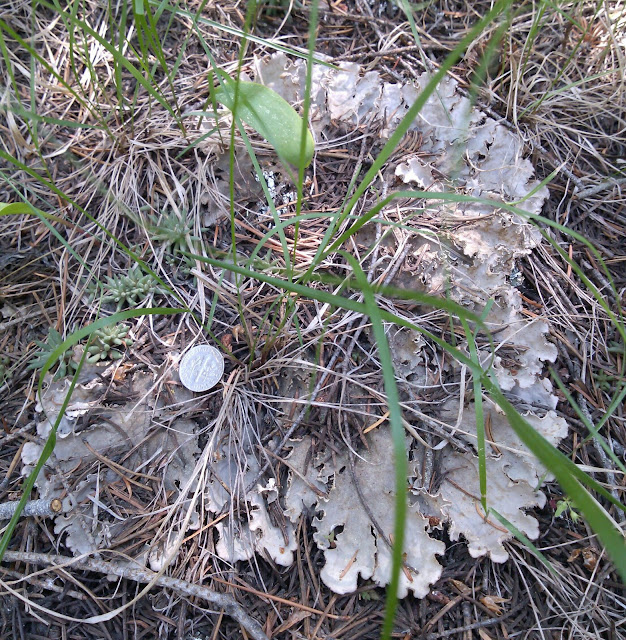Having crossed the Continental Divide and then worked our way out to a section of National Forest in the Montana foothills of the Bitteroot Mountains, I was eager to explore this unknown land rife with foreign plant combinations.
The first surprise was how often and suddenly the trees gave way to sagebrush meadows. Possibly moisture availability makes the sharp delineations between stands of Lodgepole pine mostly higher on the hills and the expanses of sagebrush meadow that tend to fill the lower dips in terrain. Sagebrush, a fragrant woody shrub that solely covers enormous expanses of dry land in western America, was here accompanied by many smaller vascular plants offering color with their blooms.
High on the rounded hills, the Lodgepole once again dropped off, giving way to fields of lupine and - big Surprise! - individuals of Pseudotsuga, while not rivaling our west-of-the-Cascades giants, larger than any of the Lodgepole pine trees and obviously ancient with their deeply riveted orange-brown bark, large dead branches, and majestic form. Is this the same Pseudotsuga menzesii, Douglas-fir, that is our constant companion in the Northwest? With mouse-tail cones, the signature bark pattern, and similar foliage, it might seem so. The more smoothly conical growth form may be caused just by environment, or this may be a more genetically distant Pseudotsuga...
The strangeness of finding this familiar face so far from home climate was furthered by the habits of its young. Back down the slopes, beneath the slim and numerous Lodgepole trunks with their flaky bark, the same Pseudotsuga formed an understory. In the temperate rainforests of Cascadia, Douglas-fir does not reproduce in the shade of other trees, but is overtaken by later successional species. Here, along with an occasional spruce, Pseudotsuga forms the next generation.
It must be the dryness of this environment that makes the species composition on some patches of ground look something like the edges of old Forest Service roads in wetter climes. Folious lichens like dinner plates, Cladonia, bits of Sedum, and sparse grasses along with tree litter try their best to keep the soil covered.




















Love the forest pictures! I checked the range of Doug Fir and was surprised to see it distributed all across the western U.S and even into Texas.
ReplyDelete